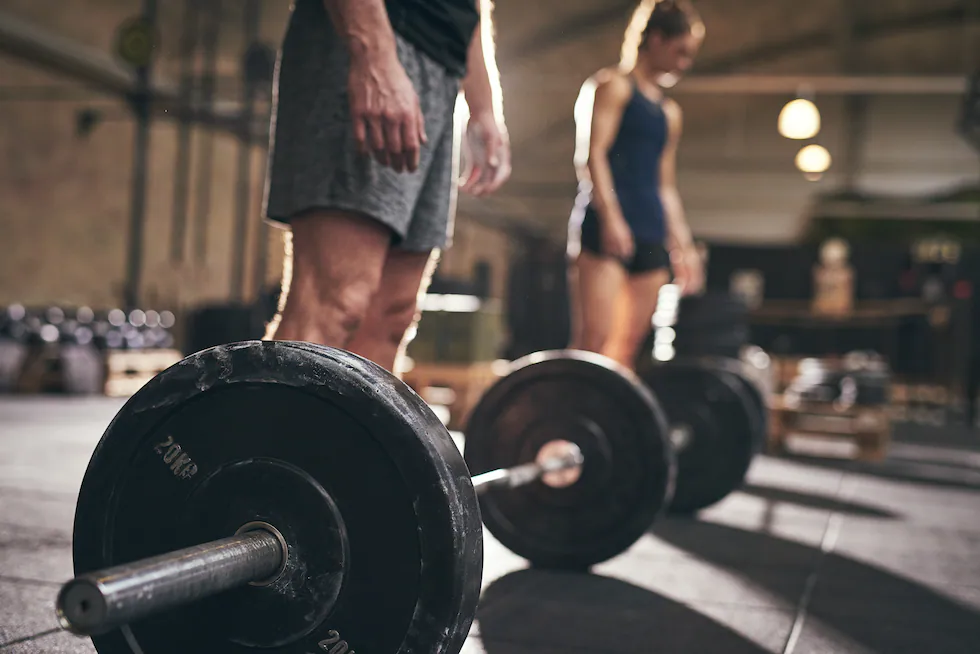
It's not all about lifting weights: rest well between sets to sculpt muscle
Rest restores the mechanical, metabolic and neuromuscular stress to which the muscle is subjected when it is exercised.
Building biceps in the gym without taking care of recovery times is like driving a car without stopping to refuel: we will run out of fuel to reach our destination and we could break down. Anyone who prides themselves on being a well-known brand knows that just as important as the type of training, the number of repetitions, the pace of execution or the weight to be lifted are the rest intervals between sets and that ignoring them decreases performance and increases the risk of injury .
A review of studies in Sports Medicine indicates that these breaks affect both acute responses and chronic adaptations of the muscle to strength training programs to increase muscular endurance, hypertrophy and power, very popular in any commercial gym. “Strength training is either intense or it is not strength training,” stresses David Martínez, personal trainer at the We/On Aqua gym in Santander. “Each set must be taken to the limit, reaching near muscular failure. If you do not maintain adequate rest periods, the intensity will plummet and the training will not have the desired effects.”
As explained by physical trainer Cristóbal Fuentes-Nieto, who has worked for different professional football clubs and is director of the master’s degree in Big Data applied to physical preparation at the Catholic University of Murcia (UCAM), these recoveries restore the mechanical, metabolic and neuromuscular stress to which the muscle is subjected when it has to overcome a load. “In the end, training is nothing more than an attack on our system, which responds by improving and adapting to better cope with that stimulus in the future,” he summarises.
But how long should these breaks last? In general, the greater the load, the longer, although it all depends on the desired goal and the profile of the person training. “It is important to seek advice from professionals because each case is different. It would be foolhardy to apply training routines from a weightlifting champion or a bodybuilder that we see on the Internet to beginners,” warns this expert. According to research by Portuguese sports science specialists , it would be preferable to rest for 120 seconds, which allows for more repetitions and training volume than shorter intervals (60 and 90 seconds).
Another recent study by researchers from the Camilo José Cela University and the Polytechnic University of Madrid analyzed the effects of maintaining a fixed rest period (two minutes) versus a self-managed time in experienced young people and found no significant differences in performance, which could indicate that experience is a degree to adjust these recoveries intuitively.
Between one and five minutes, depending on objectives
However, there are recommendations based on the three most common types of strength training objectives. First, performance in sports such as football or athletics, where speed is paramount and training is made to resemble a competition where rest periods are incomplete. “For footballers, I usually move for between one and three minutes, never more,” says Fuentes-Nieto. On the other hand, there is hypertrophy work or muscle mass gain, the star demand in commercial gyms. “For single-joint exercises (such as a dumbbell hammer curl), which can be done at high repetitions, a two-minute rest period may be sufficient, although between two and three would be ideal,” says Martínez.
According to the American College of Sports Medicine (ACSM) , this interval is sufficient to replenish creatine phosphate, a storehouse of muscular energy. On the other hand, “for multi-joint exercises, more demanding and that usually involve more weight and fewer repetitions (such as bench press , squats or leg exercises on machines), between three and five minutes are necessary,” this trainer advises. Finally, he continues, there is “power or maximum strength work, such as powerlifting or weightlifting, very heavy and multi-joint work, which also requires more than three minutes of rest.”
Martínez mentions a peculiarity in women. “During the menstrual cycle, which is now being studied a lot in athletes, depending on the phase it could be advisable to rest more because their recovery capacity may be lower and their risk of injury may increase.” Experience also implies nuances: “It is often thought that beginners should rest more than more advanced people, but these people do not know how to use an adequate technique or reach the necessary intensity, so they may need shorter breaks.” Fuentes-Nieto, however, is concerned about the excessively short breaks that she frequently observes in beginners. “It is a risk, especially in multi-joint exercises, because training under excessive fatigue conditions your technique and you make compensations to perform the exercise, even if it is badly, increasing the risks.”
It is also essential, adds this trainer, to recover between training sessions. “You must have an adequate periodization so that the stimulus caused has time to allow for muscular adaptations and so that the new training takes you, without fatigue, under that small compensation caused by the previous one.” His recommendation is to rest at least 72 hours between training sessions of the same muscle group, “which is also ideal between two football matches because playing every two days increases the risk of injury a lot.”
Although it is rare to see muscle tears in a commercial gym, overlapping fatigue from successive workouts can cause chronic overuse injuries. “They are usually tendinopathies because the muscle adapts faster than the tendon.” But the virtue lies in the middle: “They should not be greater than necessary so as not to dilute the stimulus of the previous session, which allows for a gradual progression. Another stimulus, another aggression, must be applied at just the right moment,” the expert specifies.
Sports apps yes, TikTok no
Apart from controlling the time, what should you do or not do during breaks? “People don’t rest well,” warns Martínez. “A common mistake is stretching, which doesn’t make much sense between sets, or talking to the person next to you. You’re not resting there, and you should do so both physically and mentally because training, if you keep it intense, is hard. The ideal would be to finish the set and rest without doing anything.” Fuentes-Nieto agrees: “After strength exercises, I recommend passive recovery, doing nothing, although in guided training we could include complementary exercises that don’t cause extra fatigue, such as postural correction or core exercises (previously called abdominal exercises).” Also for Martínez, “in hypertrophy, if you’re looking for extra intensity, you can do supersets [combining two different exercises in a row without rest], but afterwards you should rest for at least two minutes and it shouldn’t be like that throughout the entire training.”
And what about the ever-present screens that fill our void in downtime? That checking your phone would be valid, as long as it is not to visit social networks that distract us, which can decrease performance . “I recommend people use their phone only if they have to write down their repetitions to make a progression, if it is part of their training. But as soon as I have written down, face down and concentrated, no looking at TikTok, Instagram, videos or even listening to podcasts , which also distract attention.”
“If we have recorded ourselves on video, we can review the technical executions,” says Fuentes-Nieto. It is also useful to “time recovery times, monitor certain parameters or use it as a training diary,” he adds. In any case, “training should not be something rigid,” clarifies this trainer. “I understand sport not only as a sacrifice, but as something fun that allows us to maintain consistency and enjoy.” And who says that resting is not entertaining? “If you do a good workout, a really intense series, your body asks you to rest,” recalls Martínez. “There are people who say that they get bored during breaks. I tell them, if you get bored resting it is because you are not training well.”







2 thoughts on “It’s not all about lifting weights: rest well between sets to sculpt muscle”